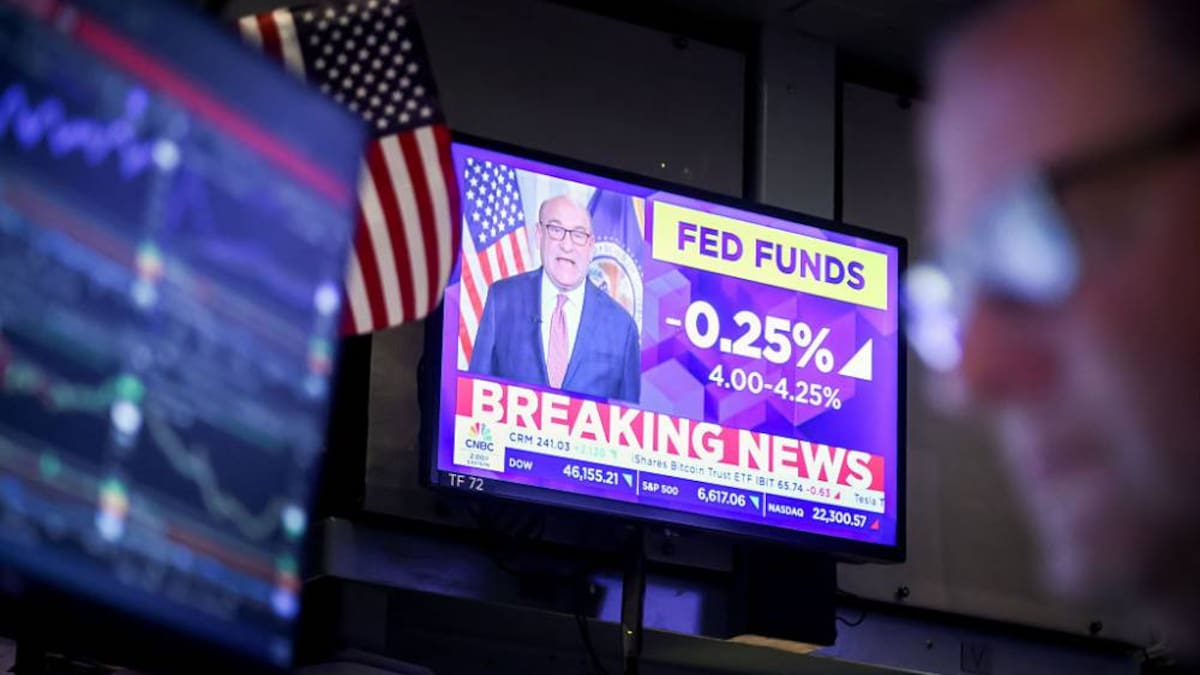The central bank faces competing pressures in adjusting rates, with Trump’s sweeping tariffs fuelling inflation risks while the job market weakens.
The Fed typically holds rates at higher levels to bring inflation back to its 2% target, but could slash rates to support the labour market too.
On Wednesday, the Fed lifted its 2025 growth forecast to 1.6% from June’s 1.4% projection.
It made no change to its unemployment and inflation forecasts.
Trump has intensified pressure on the Fed this year, calling repeatedly for major rate cuts and criticising Fed Chairman Jerome Powell.
Besides appointing Miran when another official retired early, Trump moved in August to fire Fed Governor Lisa Cook, sparking a legal fight that could have prevented her from attending the gathering.
Meanwhile, Miran has come under fire from Democratic lawmakers for taking a leave of absence rather than resigning from his White House role, a decision he attributed to the short tenure he fills, ending January 31.
Dissents
Economists had expected more division among the FOMC as policymakers walk a tightrope balancing inflation and labour market risks.
This time, employment concerns won out, even as inflation remains above 2%.
The Fed said in a statement announcing its rate cut that “downside risks to employment have risen”, even as inflation has “moved up and remains somewhat elevated”.
It noted that job gains have slowed while the unemployment rate has inched up – even as it “remains low”.
All eyes are now on Powell’s press briefing, which takes place shortly after the rate decision is unveiled.
The expectation of two more rate cuts this year is slightly more than anticipated previously.
The Fed made its last rate cut in December, and had held interest rates steady all year as it monitored the effects of Trump’s tariffs on inflation.
The impact so far appears limited but economists warn their full effects have yet to materialise.
‘Political attention’
The central bank faces heightened scrutiny moving forward too.
Miran’s confirmation – without resigning from the CEA – risks a sense of political influence over Fed decisions, EY chief economist Gregory Daco earlier told AFP.
Economists will be monitoring Miran’s remarks and further votes on rate decisions.
Separately, the legal battle by Cook – the first black woman on the Fed’s board of governors – could have broader implications for the bank.
A federal appeals court ruled late Monday that Cook could remain in position while challenging her removal over alleged mortgage fraud.
But the Trump administration plans to appeal the outcome, potentially bringing the case to the Supreme Court.
“The backdrop that we’re experiencing, where there is increased political attention on the Fed, is concerning,” Daco said.
“History has showed that in times when a central bank is under political influence, the economic outcomes are suboptimal,” he added.
This could mean higher inflation, lower growth and more financial market volatility.
– Agence France-Presse

